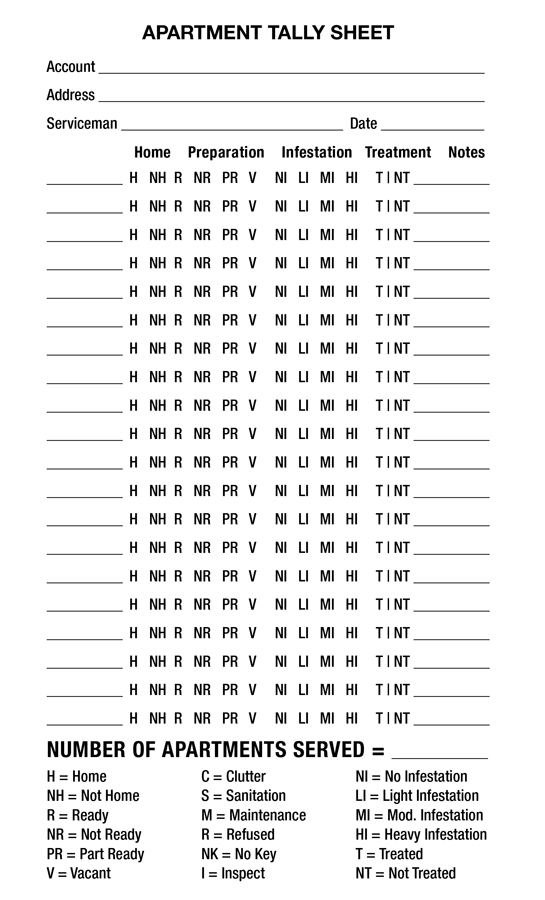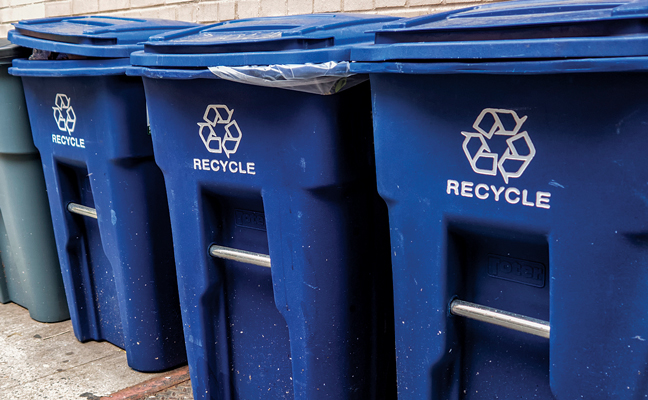
Inspection and protection are critical when performing commercial pest control work. (PHOTO: ISTOCK.COM/HEDGEHOG94)
How sad it is when a pest management company finally lands a decent commercial account — and then turns around and loses it to a competitor. In most cases, it was not lost because of price. It was lost because of a lack of adequate service and/or poor communication between the pest management professional (PMP) and the client.
Sometimes a PMP is not equipped to handle an account because of a lack of resources. Sometimes a PMP has plenty of experience, but is so caught up in sales that service gets neglected.

Click to enlarge. (CHART: DR. AUSTIN FRISHMAN, BCE)
Analyze commercial accounts from the standpoint of establishing the proper mindset to implement a satisfactory pest management program. If you currently specialize in residential work and want to venture into commercial work, answer the following questions and then decide whether you still want to pursue it:
- What amount of resources are you going to commit to in terms of hiring, initial and ongoing training, marketing, sales, equipment and time?
- What specific type of commercial accounts do you want to service? Do not decide to tackle several types at the same time. After you decide what your specialty is, you can start to narrow down the answers to question No. 1.
- To whom are you reaching out for advice and guidance? This might be the National Pest Management Association, which has a mentoring program, your state and local associations, and/or your distributor and manufacturing representatives.
- What are your growth targets? Do not rely on one large account. Start out slowly, and grow as you develop the skills to expand. If you stretch yourself too thin and then lose your large account, what will be your next move?
Predict your price
Before you can put a price on the cost of your service, you need to know your requirements for time and labor. There is a lot more to this than plugging in X amount for Y number of hours, however. You must first find out the answers to the following:
1. Where can I park, and is there a cost to park? Some hospitals have no parking facilities for outside vendors, for example. They may have an arrangement with a nearby public parking garage, and this could cost you $6 per hour or more. If you service the account six days a week for 5 hours per day, parking will cost you $180 per week and $9,000 or more per year. The time to find this out is before you quote a price, however.
2. Is it a union shop? Can you open lockers and check electrical boxes unaccompanied? Can you bring in and use your own ladder? Can you use your own tools? Do this incorrectly, and the union can demand your dismissal.
3. Am I permitted to take photos? If so, where, when and how will you take photographs? Try this without asking in the Diamond District of New York City and see what happens.
4. With whom do I set up a pest management sighting system indicating where, when and who saw what? This information is not the pesticide recordkeeping log, which must be available for review by the proper authorities. The pest management sighting log, by contrast, is private information.
5. Where can I store my case during service? Also, be sure to obtain a list of the materials you are permitted to bring on the premises. The facility may be an organic food plant, for example.
6. Is the facility open 24/7? Will your access to the facility be limited? For instance, a client provided access to a food plant on July 4 and Dec. 25 because those were the only two days all machinery was shut down and taken apart for intensive cleaning. That’s when the inside of the machinery was inspected.
7. How do I avoid tripping alarms and security surveillance devices? Entering a huge security area unannounced can be dangerous.
8. When and where must I wear personal protective equipment (PPE) like hard hats, safety shoes, eye goggles and gloves? Failure to follow safety rules can mean immediate dismissal from the premises — and if caught by authorities, a fine from the U.S. Occupational Safety & Health Administration (OSHA), too.
9. What languages are spoken, and in which parts of the account? If you expect to communicate and hand out appropriate literature, you must speak the pertinent languages. It is not always just English or Spanish, either.
10. Who is my main contact person for the account? Be sure to know at least three different people in case your main contact leaves.
11. Where is maintenance, housekeeping, administration, nursing, etc., located, and who is a good contact? Even the lowest person on the corporate totem pole could help you learn what you need to know to solve the pest problem. Maintain positive relationships with everyone at the account.
12. What is the past history of the account in terms of pest activity? This information will make you much more efficient on where to initially concentrate your efforts.
13. Is a daycare center located in the building? Some accounts provide this service for their employees. With daycare comes children, cookies and sensitive pest management concerns.
14. Where are the sewer openings (pits) for each building? You need this knowledge to protect against rodents, cockroaches and flies. Some sewer caps are broken or removed because maintenance finds it easier to clean out plugs without having to get the tools needed to open them.
15. How do you get onto the roof? With flat roofs, you need to get on the roof to check for all kinds of situations. Drones or not, you still have to physically be able to get onto it.

What do you know about the account’s recycling program — if they even have one? It can have a definite impact on your treatment effectiveness. (PHOTO: ISTOCK.COM/ELVIS901)
16. Who has the keys to pest-friendly areas, such as pantries, lockers, mechanical rooms, telephone centers, computer rooms and liquor closets? In large buildings, for example, the telephone company may be the only entity to have a key to the telecommunications closet, and you have to arrange ahead of time for someone to let you into the room. You might only have to do it once a year, but it needs to be included in your inspection.
17. Does the account have a recycling program? If so, where are the recycled materials held? What kind of materials are they, and how often are they removed?
18. Can the account provide you with simple maps that indicate which activities are in operation in each section of each floor? Blueprints can be too cumbersome to work with.
19. Does the account have any special considerations, and if so, how are you going to respond? Examples include sterile areas or multi-million dollar computer rooms with raised floors. Imagine a laboratory raising a deadly strain of bacteria — and you walk in unprotected.
20. What is the flow pattern of routine items, such as garbage, toilet paper, fluorescent light bulbs and mail? With this information, you can pinpoint critical areas that need monitoring. For example, a housekeeping cart moving throughout a structure may be serving as a “roach coach.” On the other hand, the cart may only move about on two floors; you have to know which ones they are.
21. What certification categories do you need to work in each facility? This is not as simple as it appears if the building has a commercial kitchen or an animal research area, for example. In states allowing the sale of marijuana, for example, you may need an agriculture certification for the account if the business grows marijuana for sale because it could be considered farming.
22. Do you have back-up technicians to cover the work if the main technician goes on vacation, is sick or leaves? A back-up technician should visit the account at least once with the main technician or supervisor ahead of time, so he or she is familiar with the pest management procedures for the account. This also underscores the need to keep accurate records of each visit.
23. What extra services can your firm provide? Always be on the lookout for additional revenue. Are you training your technicians what to look for in this regard?
24. Have you assigned a quality assurance (QA) supervisor? This is not the technician doing the work. The number of times this person goes to the account and time spent inspecting and meeting with key contacts will depend upon the fee obtained and the need at the time.
25. Does the account have a special certification that dictates the materials you can use? For example, is the account certified in Leadership in Energy and Environmental Design (LEED)? Is it an organic food plant, or a U.S. Department of Agriculture (USDA)-certified meat and poultry plant? Each designation will dictate what pesticides you can and cannot use. The lists change over time. Stay up to date.
Leave A Comment